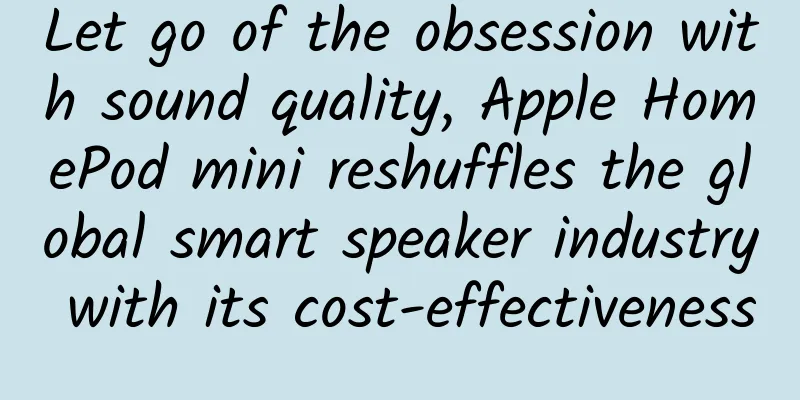Google poached Apple engineers to build its own chips to enhance AI and AR

|
June 19 news According to foreign media reports, Google recently hired Apple engineer Manu Gulati as Google's "chief SoC architect" to lead the development of processor hardware. Gulati has at least 15 patents related to chip design and has led the design of Apple's A series chips. The talent recruitment seems to imply that Google intends to use its own SoC in future Pixel phones. When the "son" series of mobile phones transitioned from the cheap and affordable Nexus to the high-end flagship Pixel, it meant that Google began to compete directly with Apple and Samsung in the high-end mobile phone market, and the latter two used their own processors in their flagship phones. For Google, which hopes to catch up, using its own mobile SoC will not only help consolidate its brand position, but also push Google to become a leader in mobile hardware. Google, traditionally considered a software company, has been making news on hardware recently. It has long been rumored that Google hopes to take a tough stance on hardware to solve the fragmentation problem of Android phones and promote the popularization of new system functions. Google has already tightened the hardware specifications for Chromebooks produced by Rockchip Microelectronics, and may do the same on Android devices in the future. Google has its own vision for the future form of mobile devices, and independent hardware seems to be the only way to realize this vision. What kind of chip? The current first generation of Pixel uses Qualcomm's SoC. The vast majority of smartphone OEMs around the world use Qualcomm products, and flagship phones are almost all equipped with Qualcomm processors. Designing a custom silicon wafer is an expensive and time-consuming process, so most product manufacturers rely on purchasing chips from professional chip companies. However, new licensing and development options from ARM have given more small companies with independent chip dreams the opportunity to make their dreams come true. ARM is a British semiconductor design and software company. ARM does not produce processors itself, but mainly provides IP licenses to semiconductor partners (Qualcomm, Apple, AMD and Samsung, etc.), which use ARM's architecture, design and development tools to launch their own processors, and finally supply them to OEM manufacturers or for their own use. A recent example is that Xiaomi purchased ARM's license, designed and developed the Surge S1 chip, and installed it in the Xiaomi 5C phone. LG may be able to make a comeback through the same cooperation model. Alternatively, ARM provides its partners with a "Built on ARM Cortex Technology" license, allowing the latter to make minor adjustments based on the existing design and market the customized products under their own brand names. This is the case with Qualcomm's latest Kryo 280 CPU. Google can even tweak major aspects of the CPU to suit specific needs, creating deeply customized chips. Qualcomm uses the same approach to build Kryo and Krait, Samsung uses Mongoose, and Apple has been developing its A-series chips in the same way. Most likely, Google will adopt the most cost-effective solution for the first generation of products: refer to the ARM solution, conduct independent design and add additional SoC processing units to meet the needs of enhanced imaging, digital signal processing (DSP) and AI computing. If Google has some more specific needs, it does not rule out a more advanced CPU custom design. However, foreign media authors believe that ARM's Built on Cortex license should be the most suitable choice for the first generation of products. There is also speculation that Google may seek to incorporate its TPU into mobile devices. Google's TPU is optimized for machine learning, and all of Google's cloud-based intelligent services, including language translation and image recognition, run on TPU. How to reduce the energy consumption of TPU to the level of mobile devices will be a tricky problem, but it is not impossible for a scaled-down TPU to work with a traditional CPU to achieve machine learning on mobile phones. Why does Google want to make its own chips? Since Qualcomm already provides very mature solutions, why does Google still have to go through the trouble of developing its own chips? The logical reason is that some of what Google wants to do cannot be achieved at the current hardware level, or Google hopes to speed up the efficiency of certain tasks. Recently, Google has made many progress in machine learning, and the real-time text and voice recognition on mobile devices is amazing. However, Apple recently boasted that the image recognition speed of its own SoC is 6 times that of Pixel. Faced with the provocation of its opponents and considering the increasing demand for professional processing power for complex tasks in the future, Google has reason to hope to use customized chips to speed up tasks. As voice assistants continue to dominate mainstream usage scenarios, Google has also made the Google Assistant the core of its smart device portfolio. By controlling chip design, Google can achieve low-power listening standby, better real-time translation and image recognition. In addition to the voice assistant, other Google services can also benefit from their own hardware, such as improving photography HDR processing time and power consumption. Video tasks and Tango augmented reality applications can also get similar optimizations. Summarize While competing with Apple and Samsung through its own chips, Google also has a more specific and practical plan, which is to maximize the potential of its intelligent algorithms, machine learning operations and augmented reality through its own chips. Manu Gulati has worked for Apple and other high-end chip manufacturers, and his expertise is an indispensable asset for Google to realize its chip vision. After completing the recruitment, the parameters and release date of Google's first mobile chip are still unknown. Foreign media speculate that the research and development time may take two years. As a winner of Toutiao's Qingyun Plan and Baijiahao's Bai+ Plan, the 2019 Baidu Digital Author of the Year, the Baijiahao's Most Popular Author in the Technology Field, the 2019 Sogou Technology and Culture Author, and the 2021 Baijiahao Quarterly Influential Creator, he has won many awards, including the 2013 Sohu Best Industry Media Person, the 2015 China New Media Entrepreneurship Competition Beijing Third Place, the 2015 Guangmang Experience Award, the 2015 China New Media Entrepreneurship Competition Finals Third Place, and the 2018 Baidu Dynamic Annual Powerful Celebrity. |
>>: BMW purchases 1 billion euros of batteries from CATL and will build a factory in Germany
Recommend
A Quick Look at Internet Marketing and Analytics Terms
Based on the feedback from students in previous c...
The dilemma of TikTok: Isn’t TikTok a short video? !
Short videos have always been very popular. I rem...
When will wearable devices replace mobile phones?
There is no doubt that mobile phones are the curr...
Did its great-great-great-great-great-grandson grow back to look like it? The creatures in this lake have been trapped in the same year
Every February 2nd, North America welcomes the tr...
International Polar Bear Day丨How can they survive in the gradually warming Arctic?
Today, February 27, is International Polar Bear D...
10 predictions for video games in 2016
2015 is aptly called the first year of Chinese TV...
Do you know all the tricks about creative design of information flow?
The core of information flow is material. As info...
The secret of the temperature of “it’s cold at high altitudes”
Produced by: Science Popularization China Author:...
Tips to improve landing page registration conversion rate!
Without further ado, here is a picture. This is t...
How to learn operations amidst all the fragmented information?
As the title suggests, this problem has been both...
International Energy Agency: Global Electric Vehicle Outlook Report 2024
The International Energy Agency (IEA) has recentl...
Huoqiu Flower Mini Program Agent Price Query, How much is the Huoqiu Flower Mini Program Agent Price?
How much does it cost to be an agent for a flower...
Tik Tok e-commerce self-streaming sales crash course: 27 video courses + course supporting tools table
Tik Tok e-commerce self-broadcasting sales crash ...
French auto parts supplier GM&S in trouble, PSA refuses further financial aid
According to foreign media reports, the French go...
Master these 4 creative optimization techniques for information flow ads to increase click-through rate by over 30%!
Nowadays, information flow advertising has become...









